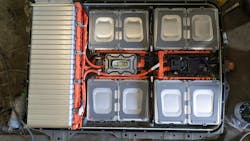Master Cell Balancing Helps Enhance EV Performance (Download)
While advanced manufacturing and ever-improving process controls are helping to increase uniformity among the cells going into batteries of every kind, variation is still a fact of life and one that normal serial circuit duty cycles only exacerbate (cell balancing is less of a concern in parallel connections). At issue, of course, are the many consequences of cell imbalance, ranging from reduced efficiency in charge and discharge cycles to actual failure.
In applications such as electric vehicles (EVs), cell balancing has emerged as an important design challenge. That’s because balancing the state of cells tends to increase the capacity and life of both cells individually and battery packs in general. Specifically, the amp-hour capacity of a series battery pack is critically influenced by the lowest cell capacity in the assembly.
